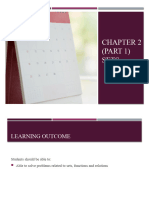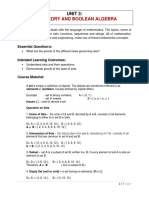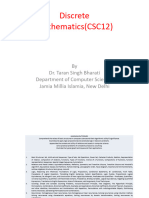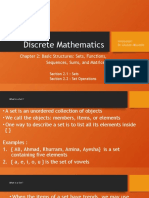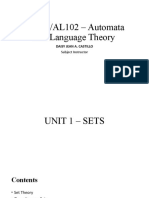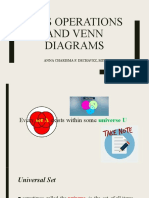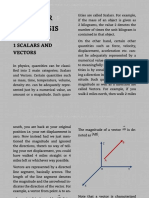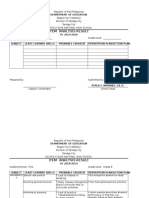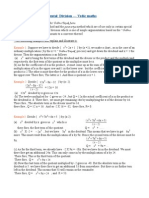0% found this document useful (0 votes)
12 views22 pagesLecture 9 (Set Operations)
The document provides an overview of key concepts in discrete mathematics, specifically focusing on sets, functions, sequences, and summations. It includes definitions and examples of set operations such as union, intersection, complement, and difference, along with set identities and methods for proving them. Additionally, it discusses Boolean algebra and the cardinality of unions, along with review questions and optional topics like symmetric difference.
Uploaded by
fawziranaCopyright
© © All Rights Reserved
We take content rights seriously. If you suspect this is your content, claim it here.
Available Formats
Download as PDF, TXT or read online on Scribd
0% found this document useful (0 votes)
12 views22 pagesLecture 9 (Set Operations)
The document provides an overview of key concepts in discrete mathematics, specifically focusing on sets, functions, sequences, and summations. It includes definitions and examples of set operations such as union, intersection, complement, and difference, along with set identities and methods for proving them. Additionally, it discusses Boolean algebra and the cardinality of unions, along with review questions and optional topics like symmetric difference.
Uploaded by
fawziranaCopyright
© © All Rights Reserved
We take content rights seriously. If you suspect this is your content, claim it here.
Available Formats
Download as PDF, TXT or read online on Scribd
/ 22

